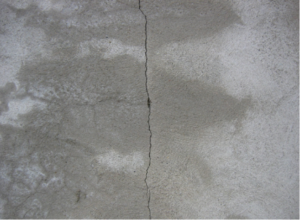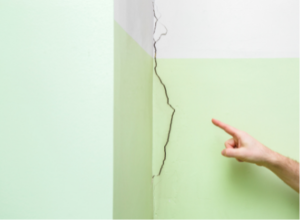Foundation Red Flags to Consider When Buying a Home in Houston
The Houston area is booming, with house prices on the rise and more and more people moving to the city and surrounding suburbs.
Buying a new home is an exciting experience, but it can be a bit overwhelming at times as well.
You’ll likely be living in the house you’re buying for years, so you want to ensure it is a safe place to live with a low risk of structural damage.
Damage to the concrete under homes is a common occurrence in Texas. With foundation repair in Houston often costing homeowners tens of thousands of dollars, you should do a thorough inspection of a home’s foundation before committing to purchase.
Experts from Regional Foundation Repair will be discussing the top four foundation red flags in the Houston area to look out for below.
Problem #1: Foundation Cracks
All foundations crack as they settle under the weight of the home built on top. Settling cracks are usually very thin and run vertically on the edge of the slab or across the surface. These are generally harmless and aren’t cause for concern.
However, more severe foundation cracks are common in Houston because of the expansive clay soil. Texas is notorious for Houston Black, a soil found almost exclusively within state lines and characterized by high clay content. Houston Black is one of the most expansive soils in the world.
Clay soil absorbs water and expands when it gets wet, so it places undue pressure on your concrete slab during precipitation. Over time, the varying pressure on your slab can cause significant breaks in the concrete.

If you’re able to access the slab’s surface or the outside edges, look for large or uneven cracks. You can also check the interior for uneven or sloping floors, both signs of severe foundation damage from soil expansion.
Problem #2: Water Intrusion
The clay soil also promotes water intrusion, a problem affecting a surprising number of homes in the Houston area. Despite being in one of the most drought-prone states in the country, Houston receives just under 50 inches of rainannually, about 1.5x the national average.
Runoff from the frequent precipitation during the wet season saturates the clay soil and remains in constant contact with your slab foundation. Because concrete is porous, the moisture can wick directly through it and accumulate under the floorboards inside.
Most homes in Houston are built slab-on-grade, so you won’t be able to access any under-home area to look for moisture build-up.
Instead, you can inspect the interior for signs of mold growth, elevated indoor humidity, and warped floorboards if the home has wooden floors.
Additionally, signs of pest infestation can indicate a moisture issue stemming from water intrusion through the foundation.
Problem #3: Drought
Houston homeowners are well-acquainted with both the wet and dry seasons. Although the annual rainfall is above average, there are weeks or months each year where the city receives little or no rain.
The clay soil in Houston not only expands when it gets wet but also shrinks as it dries. If the soil beneath a home in the area doesn’t dry uniformly, the slab foundation can settle into the ground unevenly.

Since the entire house relies on the foundation for stability, you’ll often see signs of an uneven foundation inside the home. You can look for walls that aren’t plumb, nails pushing through the sheetrock, cracks in the drywall, particularly around windows and doors, and cabinets or countertops in the kitchen and bathroom pulling away from the walls behind them.
Problem #4: Housing Boom
As mentioned previously, Houston has been going through a housing boom for the past decade or so. In response to higher demand, more and more builders are rushing construction to earn a more significant profit. Unfortunately, this practice is not only unethical but also leads to severe foundation issues in some cases.
During a home’s construction, organic material that contributes to hazardous ground movement should be removed.
The soil also needs to be compressed appropriately to allow for some minor expansion but minimize settling during Houston’s dry season. If the ground isn’t prepped correctly, the foundation will be prone to cracking and differential settling, leading to massive repairs and the potential for house collapse.
Unfortunately, there is no way to tell during an inspection if the ground was prepped properly. However, you can check if a home you’re interested in was built recently and confirm online if the builder of new construction is accredited with the Better Business Bureau (BBB).
You might be able to ask homeowners in the area who bought other houses from the builder if they have experienced any foundation issues. You can also have a thorough professional foundation inspection done to confirm that the concrete is stable and structurally sound before purchasing the house.
Wrapping Up
Buying a house in the beautiful Houston area is exciting, so don’t let these red flags scare you out of it! They’re meant to guide you toward a structurally sound home and help guarantee that your house will remain safe for you and your family.
Before you sign contracts on a new home, you should inspect the concrete below it and the interior as best you can for the above symptoms of foundation damage. Doing so can save you time, money, and headaches and help you enjoy your new home without any significant problems.



